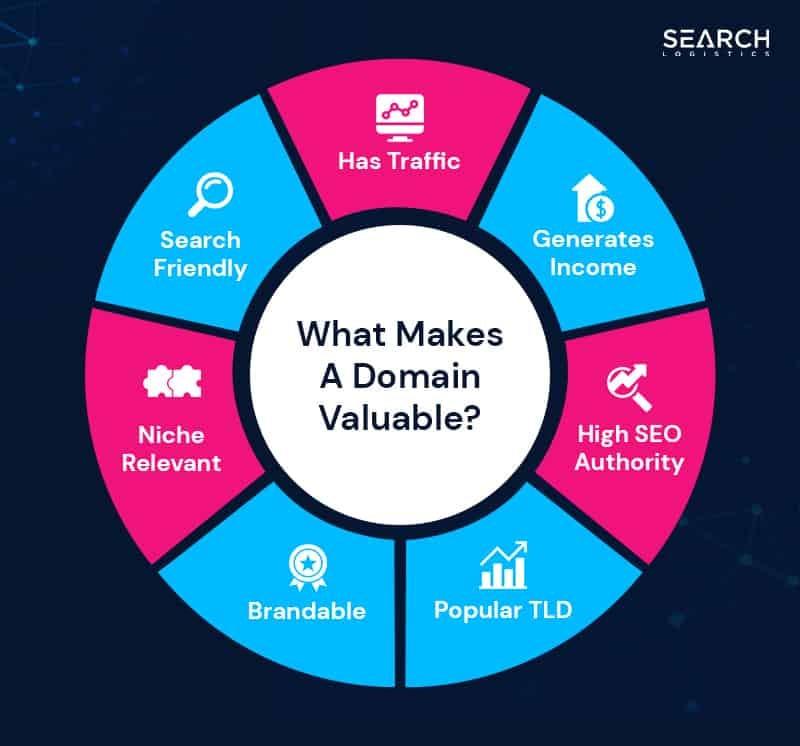Table of Contents
- Understanding the Domain Flipping Market and Its Potential
- Essential Strategies for Successfully Flipping Domains
- Evaluating Domain Names: What to Look For and How to Analyze Value
- Marketing Your Domains: Effective Techniques for Closing Sales
- Common Pitfalls in Domain Flipping and How to Avoid Them
- Q&A
- Wrapping Up


Understanding the Domain Flipping Market and Its Potential
The domain flipping market is a fascinating intersection of entrepreneurship and technology, where savvy investors buy domain names at low prices and subsequently sell them at a premium. Understanding this market requires recognizing the factors that contribute to a domain’s value, such as its length, memorability, keywords, and the industry it pertains to. High-value domains often feature short, catchy names with strong keyword relevance, making them more desirable for businesses seeking to establish a strong online presence.
Individuals looking to enter this lucrative market must conduct thorough research. Prospective flippers should familiarize themselves with domain valuation metrics, trends, and resale platforms like GoDaddy and Flippa. Key elements to consider include:
- Market demand for specific keywords
- Trends in emerging industries
- Historical sales data for similar domains
- SEO potential of the domain
Investing in domain flipping also requires strategic planning and a keen understanding of timing. Prices can fluctuate based on market trends and economic conditions, making it essential to stay informed. A simple table can outline potential profit margins based on purchase and resale prices:
| Purchase Price | Resale Price | Profit |
|---|---|---|
| $100 | $500 | $400 |
| $250 | $1000 | $750 |
| $500 | $3000 | $2500 |
Engaging with the community through forums and online groups can enhance knowledge and provide valuable insights. By gaining a deeper understanding of buyer motivations and market behaviors, domain flippers can improve their chances of success, turning their investments into lucrative opportunities.


Essential Strategies for Successfully Flipping Domains
Flipping domains can be a lucrative venture, but success hinges on the right strategies. First, conduct comprehensive keyword research to identify high-demand terms that you can leverage. Use tools like Google Keyword Planner and Ahrefs to discover keywords with significant search volumes. Look for domains that are not only easy to remember but also have a direct correlation to popular niches. Consider the potential resale value of these domains based on current market trends.
Next, focus on optimizing your domain’s appeal. A great domain name should be short, memorable, and descriptive. Think about incorporating popular extensions, such as .com or .net, as these tend to attract more interest from buyers. Additionally, ensure the domain has a clean history; use services like Wayback Machine to check if it was previously associated with malicious content. Highlighting the domain’s potential for development can make it more attractive:
- Potential for a niche blog
- Opportunities for e-commerce
- Ideal for affiliate marketing
effective marketing plays a crucial role in domain flipping. Create attractive listings on platforms like Flippa and Sedo, where you can reach a vast audience of potential buyers. Craft compelling descriptions that emphasize the domain’s unique benefits and potential profitability. To streamline your inventory management, consider tracking your domains and their status in a simple table:
| Domain Name | Purchase Price | Resale Value | Status |
|---|---|---|---|
| ExampleDomain.com | $100 | $500 | For Sale |
| SampleSite.net | $50 | $300 | Sold |
| BuyNow.org | $75 | $400 | For Auction |
By implementing these strategies, you can increase your chances of a profitable outcome in the competitive world of domain flipping. Stay informed about market shifts, continuously refine your techniques, and interact with the community for insights and support.
Evaluating Domain Names: What to Look For and How to Analyze Value
When evaluating domain names, it’s essential to consider several key factors that can significantly impact their value. Length plays a crucial role; shorter, memorable domain names tend to attract more interest and are easier to brand. Aim for names that are between 6 to 15 characters long. Additionally, the extension of the domain is important; while .com remains the most recognized and valuable, alternatives like .net or .org can also hold substantial worth, especially if they are relevant to the niche. Remember, the right extension can enhance credibility and professionalism.
The next aspect to analyze is the keyword relevance of the domain. A name incorporating popular keywords related to your target market can improve search engine optimization (SEO) and attract organic traffic. Use tools like Google Keyword Planner to identify high-search-volume terms that align with your domain. Furthermore, consider the brandability of the name. A brandable domain is unique, easy to pronounce, and conveys the essence of your business. Evaluate names for their potential to evolve into recognizable brands over time.
Lastly, assessing the history and previous ownership of a domain can provide insights into its value. Check domain history through services like Whois to determine if it has been associated with any previous businesses or if it has a history of penalties in search engine rankings. Moving forward, conduct a thorough market analysis comparing similar domains in your niche. Pricing trends, sales history, and current demand can guide you in making informed offers. Using platforms like DNJournal can provide valuable data on recent domain sales that may inform your appraisal process. Here’s a quick table summarizing factors to consider:
| Factor | Details |
|---|---|
| Length | 6 to 15 characters |
| Extension | .com, .net, .org |
| Keyword Relevance | High search volume terms |
| Brandability | Easy to pronounce and remember |
| History | Ownership and penalty status |
| Market Analysis | Compare similar domains |


Marketing Your Domains: Effective Techniques for Closing Sales
To effectively market your domains, it’s crucial to utilize a blend of strategies that align with your target audience’s needs and preferences. One powerful technique is to highlight unique selling points (USPs) that make your domain valuable. For instance, consider domains that are short, keyword-rich, or have potential for branding. Create engaging listings that emphasize these features to capture potential buyers’ interest. Alongside this, providing clear pricing and highlighting any traffic statistics can further persuade hesitant buyers.
Networking within industry-related forums and social media platforms can also enhance your visibility to prospective buyers. Engaging authentically with audiences in niche communities not only helps you build credibility but also allows you to showcase your domains effectively. Sharing content that provides value, such as insights on the importance of brandable domain names, can position you as a knowledgeable resource. Consider utilizing both organic and paid advertising methods to reach a broader audience. Platforms like Facebook and Google Ads can be tailored to target specific demographics interested in purchasing domains.
Lastly, maintaining a professional online presence is essential for your domain sales strategy. A well-designed website that features your portfolio, customer testimonials, and an easy-to-navigate buying process can significantly boost your chances of closing sales. Implementing an efficient customer service system that addresses queries promptly also plays a vital role. To summarize, here’s a quick checklist to optimize your domain marketing:
| Technique | Description |
|---|---|
| Highlight Unique Features | Showcase short, memorable domains with branding potential. |
| Network Actively | Engage with niche communities for brand awareness. |
| Professional Online Presence | Maintain an appealing website with customer service. |


Common Pitfalls in Domain Flipping and How to Avoid Them
When delving into the world of domain flipping, many newcomers make critical mistakes that can derail their potential profits. One of the most common pitfalls is overestimating a domain’s value. This often happens when flippers get emotionally attached to a name, ignoring market trends and data-driven insights. To avoid this, rely on tools and resources that provide valuation metrics and analytics. Understanding the factors that truly influence a domain’s worth—such as keyword relevance, domain age, and existing traffic—is essential for making informed purchasing and selling decisions.
Another frequent misstep is neglecting the importance of research. Skipping due diligence can lead to purchases of domains with legal issues, trademark conflicts, or poor previous reputations, which could severely diminish resale potential. To sidestep these hazards, always conduct thorough research on a domain’s history using WHOIS databases and similar platforms. Compiling comprehensive reports can aid in recognizing red flags before committing, ensuring your investments are sound and sustainable.
Lastly, many domain flippers underestimate the value of branding and marketing when listing their domains for sale. A domain name has more appeal when it comes with a solid branding strategy and effective marketing push. Failing to create a compelling listing is another trap that could lead to lower bids. Make sure to utilize engaging descriptions that highlight the domain’s unique selling points, and consider leveraging social media and domain marketplaces effectively. This approach not only increases visibility but can also breed competition among potential buyers.
Q&A
Q&A on Domain Flipping Books
Q: What is domain flipping? A: Domain flipping is the process of buying domain names at a low price with the intention of selling them later at a higher price. It’s similar to real estate investment but focused on online properties. The key is to identify valuable domain names that appeal to potential buyers, either because of their length, keywords, or brand potential.Q: Why should I consider reading books about domain flipping? A: Domain flipping books provide valuable insights, strategies, and tips that can help both beginners and experienced flippers navigate the complexities of the market. They often cover best practices in selecting domains, valuation techniques, and marketing to prospective buyers, allowing you to make informed decisions and maximize your investment returns.
Q: Who should read domain flipping books? A: Whether you’re a budding entrepreneur, a digital marketer, or someone looking to generate passive income, domain flipping books cater to a wide audience. They are particularly useful for individuals seeking to diversify their income streams or those with an interest in online entrepreneurship.
Q: What are some popular domain flipping books to consider? A: Some highly recommended titles include “Domain Flipping: How to Buy, Sell, and Flip Domain Names for Profit” by R. F. Hutton and “The Complete Guide to Flipping Domain Names: Learn How to Buy, Sell, and Make Money with Domain Names” by D.J. Miller. These books offer a comprehensive overview of the domain market alongside actionable strategies.
Q: Are there any risks associated with domain flipping? A: Like any investment, domain flipping carries inherent risks. The primary concerns include market fluctuation and the potential for unsold domains. Often, new flippers may overestimate a domain’s value or overlook costs related to registration and maintenance. However, with thorough research and strategic planning, many of these risks can be mitigated.
Q: How can I choose the right domain names to flip? A: Successful domain flippers often look for short, memorable, and keyword-rich names that carry branding potential. Utilizing tools like keyword analysis and examining current trends can help you identify in-demand terms. Additionally, keeping an eye on emerging industries may reveal valuable opportunities before they become saturated.
Q: Is there a community or network for domain flippers? A: Yes! There are numerous online communities and forums dedicated to domain flipping, such as NamePros and DNForum. Engaging with these communities can provide you with networking opportunities, insider tips, and feedback on your buying or selling strategies, helping you to stay informed about industry trends.
Q: How can I effectively market my flipped domains? A: Effective marketing strategies may involve listing your domains on popular marketplaces like Sedo or Flippa, leveraging social media platforms, or even optimizing a website to showcase your portfolio. Crafting compelling descriptions and highlighting potential uses for your domains can also attract buyers looking for specific criteria.
Q: Where can I find resources for further learning about domain flipping? A: Beyond books, numerous online courses, webinars, and blogs focus on domain flipping. Websites like Udemy offer courses specifically tailored to domain investing. Additionally, following industry experts on social media can keep you updated on the latest trends and tips in the domain flipping arena.
diving into the world of domain flipping can be both exciting and profitable. With the right knowledge and strategy, anyone can become a successful domain investor. Happy flipping!

